
22 minute read
Technology Beyond the Classroom
THE TH STUDENT STU ISSUE ISS

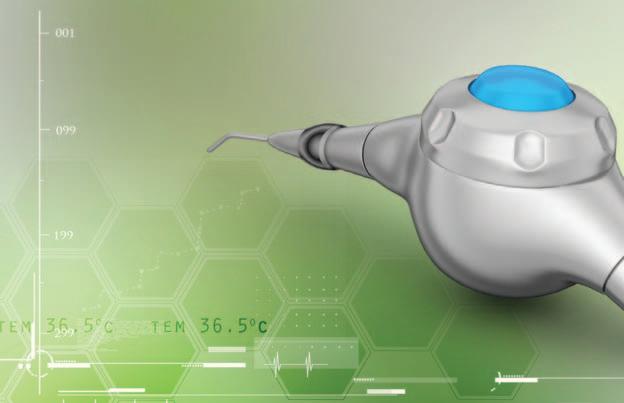
As founder and CEO of Cellerant Consulting Group, dentistry’s leading incubator and accelerator, I am exposed to new technologies and brilliant entrepreneurs on a routine basis. As founder of the annual Cellerant Best of Class Technology Awards – now in its 12th year – my team and I spend an entire year searching to find dentistry’s leading technologies.
With those two points of perspective, I can say with confidence that as you prepare to enter the dental community as a new provider, there is so much around both hardware and software to be excited about, innovations that will surely benefit your practice and patients. When Oral Health asked me to write this article, I jumped at the chance, eager to leave you awed and maybe even a little inspired. We’ll discuss the entry of artificial intelligence, machine learning, nanoparticle technology, and anti-microbials into daily practice. I will also discuss legacy technologies that are considered must-haves in establishing the ideal practice. Let’s begin. LOU SHUMAN, DMD, CAGS
Lou Shuman, DMD, CAGS, is the CEO of Cellerant Consulting Group, dentistry’s leading corporate incubator and accelerator. He is a venturer in-residence at Harvard’s i-Lab, chairman of the technology advisory board at WEO Media, a member of the Oral Healthadvisory board, and founder of the Cellerant Best of Class Technology Awards.
MMG Fusion ChairFill |
mmgfusion.com
Imagine a machine learning software solution that, when you push a button, searches all your electronic records, finding all the most profitable dentistry in those records that have not yet been performed. It communicates with those patients through text, email, and video, then sets up the appointments— all with no staff involvement!
MMG Fusion does so much more than Chairfill. It literally manages, markets, and grows your practice. Ava, your virtual assistant, provides your team assignments from the information it gains from MMG Fusion and then follows up until completed. This is artificial intelligence delivering tangible benefits for your practice.
Infinix by Nobio |
infinix.com
One of the greatest challenges in clinical dentistry is placing posterior composite restorations. Though esthetically pleasing, the rate of secondary caries is significant. It can sometimes occur to a point where the patient considers it operator error instead of material failure. Enter Nobio, a company based in Israel, and its Infinix line of products launching later this year.
Infinix is an antimicrobial nanoparticle that received FDA 510k approval as an anti-caries agent. It is a true game-changer, clinical proven to prevent secondary caries. Unheard of, but true! It will be able to destroy all decay pathogens at the tooth composite surface and interface and it does not have a shelf life. It will maintain that anti-caries barrier indefinitely, and this is just the beginning! Imagine the possibilities: integrated into implants, cements, clear aligners and more. The possibilities are endless.
Greenmark Bio LumiCare |
greenmarkbio.com
Imagine providing hygiene patients with a special nanoparticle solution they swish and then, with a curing light, luminesces the patient’s enamel decay!!! In the near future, that patient will be provided a take-home rinse that will remineralize the enamel decay back to its original state!
One of the challenges practitioners have with young patients in braces is poor hygiene and the impact white spots (ie decalcification) presents. Imagine that these brilliant scientists at Greenmark Bio are working on a similar remineralization solution that can help the white spots remineralize back to a virgin state! I encourage you to check out their website and learn more about the science behind the product. Simplifeye Amplify |
simplifeye.com
Potential patients arrive at your website. They are met by a live greeter who is available 24/7, which is critical, since you aren’t actively monitoring your website at all times. The live greeter, depending on your needs, can speak up to seven different languages. As the prospective patient is chatting with the greeter, an artificial intelligence engine is “listening” to the prospective patient and with its “memory”—that has digested hundreds of thousands of conversations, guides the chatter to provide the right responses to maximize the opportunity to convert the potential patient into your practice. The greeter also can make a direct appointment in your appointment book.
This service and technology is called Amplify and is one of many groundbreaking technologies by Simplifeye.
SmartMirror |
Smartmirror.dental
Imagine a dental mirror illuminated with 36 LEDs, providing unprecedented intraoral visibility and so much more. The SmartMirror connects to your computer via WiFi and has a video camera that can be displayed live on-screen to allow patients to be educated about their needs! It also has an integrated microphone that allows dictation to be captured along with a video feed! SmartMirror looks to completely disrupt the dental mirror market and you can see why.
BienAir iOptima |
dental.bienair.com
The handpiece is the most important club in your bag. There is a family company in Switzerland that has been making handpieces in the “Watch Valley” for generations. Their handpieces are unparalleled in quality and precision.
The company’s iOptima system has won the Cellerant Best of Class Technology Award for seven straight years – a near impossible achievement. iOptima enables you with one handpiece to perform all your dental operations-restorations, endodontics, implantology, and scaling. It is all controlled by an included iPod touch or an iPad mini. Nothing out there comes close.
Its electric handpieces are known to be quieter, cooler, and more efficient, while offering consistent torque. The handpiece is created with safety benefits that pre-dated COVID concerns, but make it indispensable now, such as less aerosol – in some cases, no aerosol – anti-retraction valves and more.
Tokuyama Dental OMNICHROMA |
omnichroma.com
Tokuyama Dental’s OMNICHROMA is the first universal composite that matches every patient’s tooth shade – from A1 to D4 – with a single shade of composite! Its innovative technology utilizes structural color to match every tooth shade. Its 260 nanometer fillers are the precise shape and size necessary to generate red to yellow structural color with the reflected color of the patient’s surrounding dentition. This results in a perfect match with no added dyes or pigments.
Carestream Dental CS 9600 |
carestreamdental.com
The time will come when you need to make the big purchase: a CBCT System. The panel that votes for the Best of Class Technology awards feels a special responsibility in choosing a true differentiator in this category, if there is one…and there is: The Carestream CS 9600.
The 9600CBCT system is a highly intelligent piece of technology. Intuitive features give the 5-in-1 system the capability to deliver exceptional image quality for more precise diagnoses while maintaining ease of use and patient comfort. It combines 2D panoramic technology, CBCT imaging, 3D model/impression scanning and 3D facial scanning, along with optional cephalometric imaging. This machine provides so many clinical needs that it will easily become a critical addition to a modern practice.
These eight technologies are redefining “state-of-theart” for our profession. I hope I have piqued your curiosity about these products, each a true gamechanger. Technologies like these and others will ultimately bring great benefit to you, your professional future, and the patients who will look to you to improve the quality of their lives.
If you would like to continue to learn about new technologies in dentistry I have a monthly column in Oral Health called “The Last Word on Technology,” which literally is the last page of the issue every month.
Welcome to the family, be well, and be safe. OH
Michael Kutner
Mitchell Wong
Howard Kutner
a boutique law firm servicing dental professionals since 1974

• Dental Practice Sales and Purchases • Incorporation of dentistry professional corporations • Estate planning for dentists • Associate, shareholder, partnership and cost sharing agreements • Lease and real estate transactions.
www.kutnerlaw.ca | 905 479 2524 50 Acadia Ave., Suite 307, Markham, Ontario L3R 0B3
THE STUDENT ISSUE
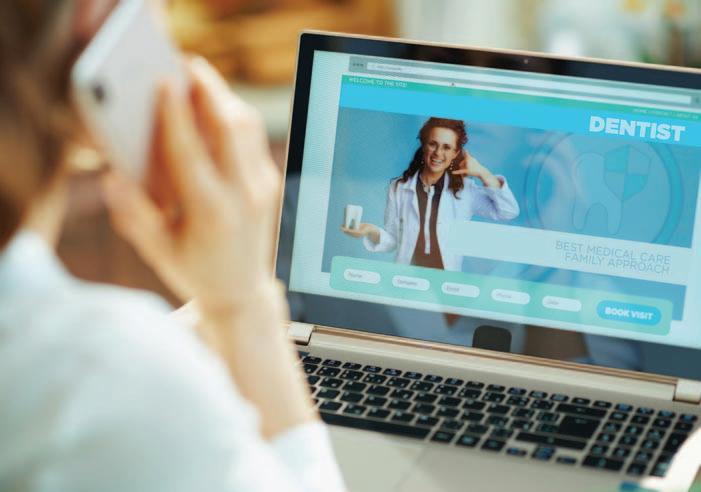
DAVID DARAB, DDS, MS, MBA
There Is no “I” in Marketing 5marketing rules to help patients find you
As the CEO of your practice, you will have a multitude of clinical and business decisions to make daily; one of those is marketing. As your own Chief Marketing Officer (CMO), you need to understand the “nuts and bolts” of marketing and how they interrelate to attract a customer. You will likely outsource the technical details of your marketing, such as website development, search engine optimization (SEO), along with content creation. However, as the one in charge, you must provide clear direction and monitor the results of your efforts. The good news is that there is no one right marketing solution; your marketing must be fluid and capable of changing with your practice goals.
RULE 1
Marketing has everything to do with your customer and nothing to do with you, sorry. We are inundated with marketing messages constantly. These messages influence the foods you eat, the cars you buy, the clothes
David Darab, DDS, MS, MBA, speaks business, helping bridge the gap between Clinical Practice and Business Insight. He hangs out at the corner of Information and Action. Strategy, Tactics, Financial Insights, and helping Dentists get UnStuck are his passions. He serves as the Director of Dental Practice Strategies for OmniStar Financial Group headquartered in Wilmington, NC. You can reach him at ddarab@omnistarfinancial.com.
you wear, the devices you carry, the computer on your lap, and the schools you attend. In the past, marketing was expensive and done by a few large agencies with a great deal of care, planning, and precision. Today, marketing is cheap and plentiful. It can be done from your phone by anyone anywhere, anytime. Because of this, it can be noisy, loud, disruptive, annoying, and off-target, making it ineffective and frustrating for business owners trying to use it and potential customers consuming it.
Many media platforms that can deliver your marketing messages; newspapers, newsletters, yearbooks, church bulletins, athletic programs, direct mail, billboards, radio, Facebook, Instagram, YouTube, Google, LinkedIn, and word-of-mouth. Even your Servicescape, the location of your practice, your office design, and layout broadcast your Marketing Message. With so many choices, how can you determine where to direct your limited marketing budget? How do you find a way to market “for” your patients and not “at” them? It all starts with strategy.
RULE 2
Strategy before tactics, always. There’s confusion between tactics and strategy. Today these words are used interchangeably, but they are not the same. Understanding the distinction between strategy and tactics is critical and will serve you well as your practice grows through the years.
Strategy is a “thought” process; it supports your longterm vision and goals. A strategy gives you a path forward to achieving your mission and helps in your decisionmaking process. Outlining your strategy is hard work; it takes time and effort to get right. It cannot be delegated to others since so much flows from it that affects your business. The good news is that Strategy is for the long term, not quickly or easily changed.
Tactics, in contrast, are ACTionable (tACTics), short-lived, and TArgeted (TActics). Tactics are TAngible (TActics), the things our customers interACT (tACTics) with, and see. Good tactics have a purpose that supports your strategy. Tactics should be easily measured and tracked and pivoted when adjustments are needed. If a tactic fails, it can be discontinued, but it does not mean your strategy is flawed.
Let’s consider an analogy, sailing. Your strategy is to reach a destination. Sailboats have two directional levers to control, a rudder and sails. The wind is a perfect analogy for market forces that frequently change direction. To reach your destination (strategy) requires you to chart a course and then change your sails and rudder (tactics) to achieve your result. If the wind changes direction, you will need to adjust your rudder and sails to alter course (change tactics) but not change your destination (your strategy). Conversely, one does not set sail and randomly adjust the rudder and sails, or you will never reach the intended destination.
RULE 3
Know the ideal patient you wish to attract to your practice. With an understanding of strategy and tactics now, let’s get marketing. When you have identified your ideal patient, you can begin to build a marketing strategy to attract them to your practice. The four “Ws” can help guide you. They are; who, what, where, and why.
WHO are they? Are they retired? Are they parents? Are they school age? Teenagers? Who do they identify with? Who are their role models? Are they frequent or infrequent visitors to the dentist? Do they work outside the home?
WHAT do they want? What services do they desire? Do they want dentures or implants? What services are missing in the market? What are they reading online and offline? What are your competitors doing and saying? Do they want to use dental insurance?
WHERE are they? Where do they hang out? Are they on Facebook? YouTube? Online? In the carpool line? The soccer or sports fields? In the band? The PTA? Do they work in or outside the home?
WHY you? Why your practice? Why should somebody use your services or hire you? Why are you their best choice for a dentist?
THE STUDENT ISSUE
RULE 4
Be different; it’s the easiest way to stand out in a crowded market. Now that you have your ideal patient, it’s time to find a way to attract this group of individuals to your practice. It is tempting to copy what others are doing or use generic marketing services and platforms to deliver and broadcast your message. The shortfall with that tactic is that you appear like every other dental practice. The best way to target your ideal client is to develop a Unique Selling Proposition or Unique Value Proposition. Interviewing your best patients for their insight as to why they chose you is a great way to begin. Think of how you treat patients that are unique and special. What are your special skills or training that differentiates you from other dentists in your area? What unique capabilities or technologies do you have to enhance your patient’s care and treatment experience? Do you have special or extended hours that meet the needs of busy executives or moms?
RULE 5
You can’t be all things to all people. Just as important is knowing who may not be a good fit for your practice. Compatibility, or lack thereof, can relate to your expertise, interests, patient age, insurance and payment options, and even your personality, to name but a few. A mismatch here will only lead to a disappointed patient and a frustrated team.
Now that you have formulated a marketing strategy, you will be less likely to waste time and money. You will know better if you are going off track too. More importantly, you will have a precise direction for the marketing services you will outsource; website, content, social media, along with advertising. A clear path prevents each of these experts from pulling your business in a different direction. Remember, you are your CEO and in charge at all times.
YOUR MARKETING MIX
So, we have talked about a lot, but what does a marketing mix for a practice look like?
1It all starts with your website, that is your marketing home base. It should be visually appealing and engaging. It must be easy for visitors to find the information they need without scrolling or searching. It must be SEO optimized so search engines can find and rank you.
2Create unique content that educates and informs. This includes blog posts, articles, brochures, and white papers, which can be re-purposed and used over all of your media channels. Unique content helps your SEO, too, by raising your search rankings. Google knows what’s original and what’s not.
3Establish a presence on social media platforms; Facebook, Google+, Instagram, LinkedIn. These sites have built-in menu-driven ad campaign sites that allow you to customize ads, set daily budgets, and target selected demographics by location, age, sex, and interests. This is a great place to start using and experimenting with your newfound marketing knowledge.
4Encourage your patients to leave reviews on Facebook and Google. You need a minimum of 60 reviews per site to boost your ratings.
5Empower word-of-mouth marketing by your existing patients. Ask for a referral! Remind your patients that you always have room in your practice for their family, friends, and co-workers.
Together, these strategies can help bring patients to your practice, but it’s important to remember that marketing will not keep them there. Once patients arrive, it’s up to you and your team to deliver exceptional service and clinical care to keep them coming back and sending others. The ultimate compliment your practice can receive is the referral of friends, family, and co-workers.
LET’S GET STARTED
It’s ok to be uncertain about how to start your marketing. You can begin a small campaign without breaking the bank. Always keep your target audience in mind at every step. There are numerous platforms, channels, and marketing techniques you can try. Remember, there is no “right” way, no “canned” approach that works for everyone. You will never see results if you never start. So, what are you waiting for? Get started, be creative, trust your instincts, seek feedback, and have fun! OH
THE STUDENT ISSUE
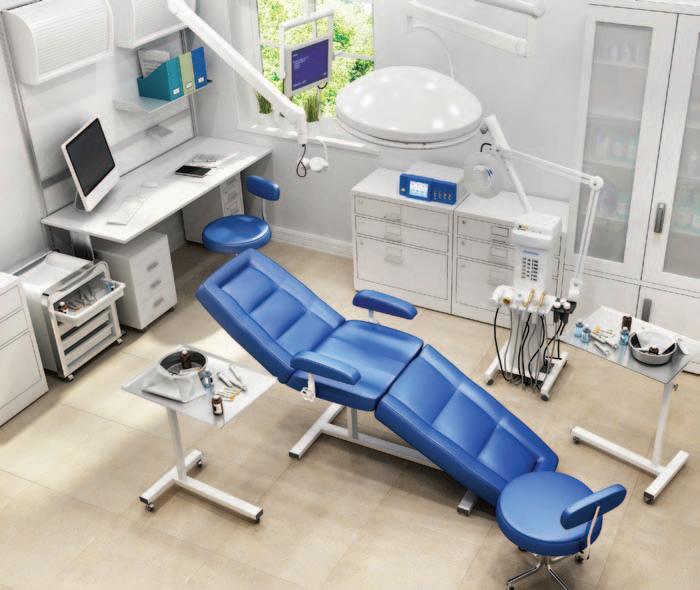
ALEX ZLATIN
MUST-HAVE TECHNOLOGY IN A DENTAL CLINIC: 2021 EDITION
If there is anything that life has taught me, it is that there is a price to pay for everything that you do. The use of technology is no different. Tech advancement is usually created out of a need or a pain that is being addressed. As such, it is positioned to address those.
However, as you know, in life you cannot get anything without sacrificing something else. In the case of technology, you will be sacrificing both time and money. Time to learn the technology and its application and money to purchase the rights to use it ahead of your counterparts. This short article aims to put this sensitive balance in perspective
Alex Zlatin is the CEO of dental practice management software company Maxim Software Systems (MaxiDent). He helps dental professionals take control and reach the next level of success with responsible leadership strategies. He leverages his experience in “Responsible Dental Ownership – Balancing Ethics and Business Through Purpose”, a detailed guide providing practical tools and a unique, proven approach to running a successful dental practice. Websites – Maxidentsoftware.com; officemanagers.ca; alexzlatin.com
and help you determine which technologies fit who you want to be as a dentist.
Considering the fallout of the COVID pandemic that is running rampant throughout the world, you have probably been exposed to hundreds of tech solutions that are being pushed with an increased sense of urgency. Having said that, the key is to remember that technology must enable your vision and purpose for your patients and not the other way around. The most important aspect of technology adoption is the understanding of the value received versus the price paid for the service.
I am sure you understand that your ability to use the latest technology requires you to not only accept the cost of it, but to also ensure that you and your team are properly trained in using the new technology. It is imperative that you understand the benefits of pivotal technology and build it into your clinic plan. As we dive into the 3 main technologies to take advantage of in 2021, I will rate each with the 3 parameters you should use to assess technology: Sustainability, Value, Cost.
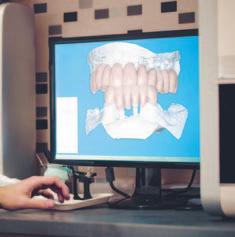
1 Digital Impressions Traditional impressions have been one of the most obnoxious activities a patient can have in a dental clinic. A patient cannot have a positive experience in a clinic, if the impression material is sliding down their throat. Now that you had this unpleasant feeling, I urge you to join the “digital dentistry” movement and ensure that you are working in a clinic that offers digital impressions and is incorporating digital tools to remove awkward experiences for patients.
On a personal note, I have recently switched clinics. Not because they were performing bad dentistry, but because they were not using the most advanced tools to ensure my comfort. If no one is going to educate patients in your vicinity, you will be safe. However, I can guarantee that there are passionate and driven dentists in your vicinity who are planning and implementing strategies to win over these patients through education.
As the cheapest technology piece in this article, I can confidently say that the long-term benefits of having it outweigh the cost of both the system and the training required. In time, digital impression will become a standard of practice. Until then, you have the option of leveraging it towards building a strong patient base with patient comfort at the forefront.
The cost is anywhere between $20,000 and $40,000. Looking ahead to 5-10 years in the future, this might not be a sustainable advantage, but I’ll leave you with this thought: Imagine how many patients you can win over with a less invasive procedure (no gagging), until it is widely available in your neighbourhood?
Alex’s rate of the 3 parameters (0-10): Sustainability – 3 Value – 9 Cost – 8
2 Laser –Minimally Invasive Dentistry Minimally invasive dentistry (using a laser) has been around for quite a while now. The composers of this technology have failed to penetrate the market to the point of laser use becoming mainstream. Without getting into the politics of why that is, I’d like to urge you to explore this technology. The ability to treat conditions in a minimally invasive way with tools that are better than your metal instrument is another option you can offer your patients for conditions you traditionally just “watch”.
Considering that there are two main types of laser (soft and hard tissue), it is imperative you leverage industry training to ensure you profoundly understand this technology ahead of making it a unique provisioned service in your clinic. The versatility of laser technology in the treatment of a myriad of conditions is enough of an incentive to make it
attractive to any young dentist in today’s industry.
As mentioned above, there are both soft and hard tissue lasers, which are grouped by their frequency. As you consider this technology, it is imperative you select the right vendor and the appropriate type of laser and education. This path requires a substantial investment as laser technology rapidly changes, but you can compensate for it by providing a wider array of services to your patients.
Alex’s rate of the 3 parameters (0-10): Sustainability – 8 Value – 9 Cost – 2
3 Digital Records It still catches me by surprise when dentists tell me they are using a paper chart. Perhaps it is because I run a software company that specializes in dental electronic records. Unfortunately, there are (too) many clinics that are still using paper charts for record keeping. After using a paper chart for over 20 years, electronic charts will be quick and efficient to document the patient’s needs. Having said that, the management and administration of recommended treatment through paper charts is a complete disaster.
If you are still reading, you agree that maintaining digital records is the way to go. Although this is true, and although colleges create a strict and clear outline of how records should be kept in a digital form, looking at the reality of record keeping, it appears that much is left to interpretation.
There are two main aspects of bringing your records into the digital realm:
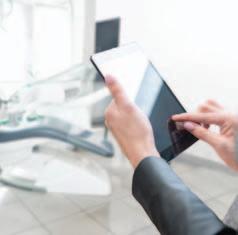
a. Digital X-Rays – There is much research out there with regards to digital radiations. Even if you prefer to take additional images, it will expose the patient to less radiation versus traditional x-ray equipment. The ability to have more angles of x-ray, while not exposing the patient to additional radiation, increases the probability rate of the acceptance and success of the proposed treatment. On top of digital x-rays, it is important to mention intra-oral images and fluorescent light images. Using these tools, you are better equipped to help patients with prevention of dental conditions.
b. Digital Charts – Let’s face it, you are looking for a quick way to document what you must so that you are able to continue caring for the patient. The problem is that the paper never translates into a database that easily. There is a substantial amount of manual entry by the existing administration team. Once you have transformed the information into digital patient files, you are able to continue and leverage the digital platform to create the appropriate treatment plan for the individual in question.
Alex’s rate of the three parameters: Sustainability – 9 Value – 7 Cost – 6
Technology is expanding at an unprecedented pace. In these times of uncertainty, you want to ensure you have all the tools at your disposal to maximize the treatment options for you patients. But, what does this mean? In essence, as a clinical professional you are being challenged to have the most advanced tools to treat the patients under your “umbrella”. In today’s world, you are expected to use modern tools and research to provide multiple options of treatment and possible outcomes.
Beyond the Hippocratic Oath, you have both the responsibility and the power to support patients, through education, towards the most optimal treatment for their condition. The optimal treatments are often limited by the tools you have at your disposal, including the education you possess and experience you have accumulated throughout the years. I strongly recommend that you spend the remainder of your clinician professional lifespan in increasing the patients’ options for treatment and preventative strategies – this will return to you in flavors of trust, continuous business and community assistance. OH








